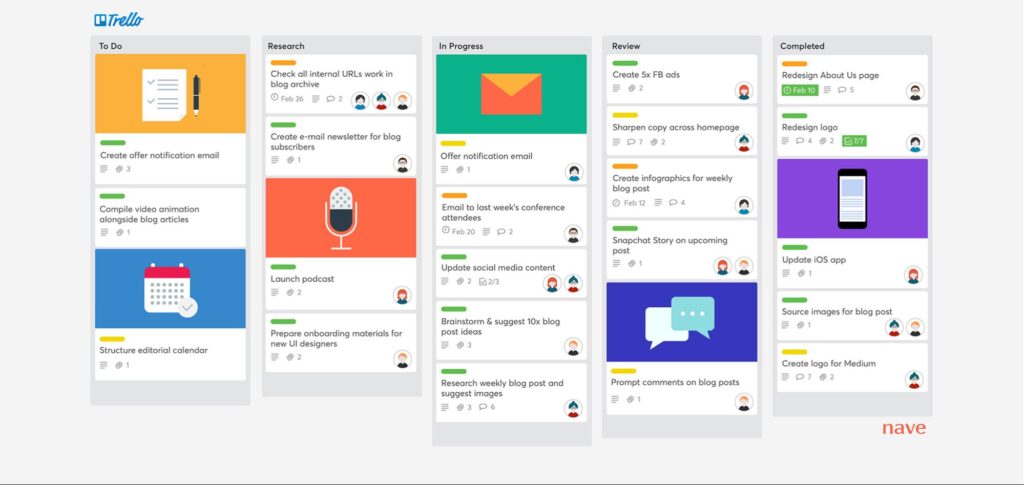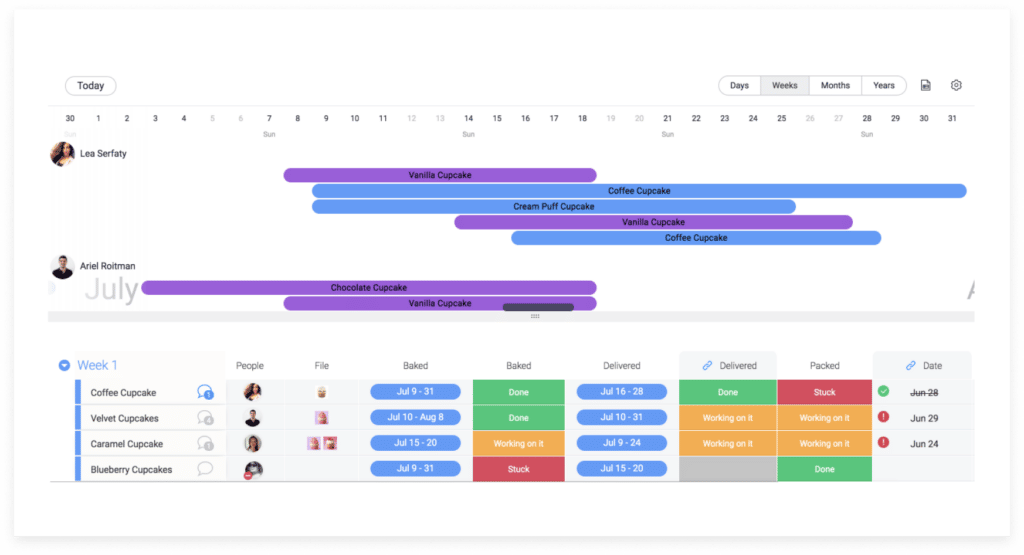So you’ve started your side hustle. You made the initial leap and took action to turn your passion project into a viable business that will generate revenue.
If you followed part one of this series, you should have already built your website and started implementing your initial marketing mix. Now what?
In this blog, I will detail what steps you should take next in building your side hustle into a six-figure venture. Namely, we will focus on these three areas:
- Creating financial goals
- Developing a roadmap of what you’ll be doing within the first 30 days (and after)
- Which project management tools you’ll use to track and measure your progress
This next phase of your side hustle growth is all about developing goals and taking steps to achieve them. It is possible to have some success from just “going with your gut,” but successful businesses are built on goals, data, roadmaps, and taking massive action.
We have all heard that writing down a goal increases the chances of success — some studies show improvement by as much as 42%. One study, however, took it a step further. While participants who thought about their goals and ranked them had a 43% success rate, participants who wrote their goals down, made and wrote down their action commitments, and also shared their commitments and progress with a friend had a 76% success rate.
Clearly, being strategic about your goals and how you implement them can make all of the difference between success and failure. Let’s talk about the goals you have for your side hustle and what steps you can take to ensure success.

Create Financial Goals
When many people start their side hustle, they have one financial goal: make more money. In fact, you may be interested in this series simply because it provides the steps to build your side hustle into a six-figure paycheck.
Making six-figures is a great long-term goal, but it shouldn’t be your main focus, especially in the first couple of years. Initially, you need to plan out financial goals for your side hustle that are realistic and attainable, while also pushing you to consistently improve.
In order to make financial goals, you need to know where you are starting financially. So start with collecting data. What is the overhead of your side hustle? Do you need to rent out space or are you working out of your home? What is the cost of your domain hosting service? BlueHost starts at $3.95 a month while Kinsta starts at $30/month — so the cost can vary based on what features you are looking for. Do you need to hire freelancers to get your side hustle off the ground? You can head over to Fiverr or FlexJobs to compare the cost of hiring freelancers for everything from content writing to bookkeeping services to SEO experts. Do you need liability insurance, equipment, or are there maintenance costs?
Write down each of these expenses and add them up to figure out your overall overhead costs. Some of these may change from month to month, but it is important to have a ballpark figure to start with.

Then, calculate how much you can realistically expect to make in your side hustle right now. Yes, in the future you hope to make much more, but how much can you reasonably expect to bring in this month or next month? Keep in mind that your time is likely limited (especially if you have a full-time gig on top of your side hustle) and that you risk burnout if you don’t give yourself at least some downtime. This is the time to be honest with yourself, and not create models based on you stretching yourself so thin that you eventually break.
Once you have these figures, subtract your overhead from your gains and that shows your expected profits. With this data in mind, how can you improve your profit margins over time? This is where developing financial goals comes in. Are there places where you can cut costs? How can you use your money and time more efficiently? Are there certain tasks you can outsource in order to free up more time? Using all of this data can help you make financial goals to build your side hustle into a money-making machine.

However, when developing goals of any kind — especially financial goals — make sure that they are SMART goals.

When it comes to your financial goals, keeping them “SMART” might look something like this:
- Specific: What exactly do you want to achieve? Hint: “make more money” isn’t specific enough. Do you want to find more clients? Increase your profit margins? Gain more visitors to your website? Pick something specific that you can focus on that will, in time, make you more money.
- Measurable: You need to be able to determine if you have achieved your goal, and you can’t do that without having a way to measure it. “Increase brand awareness” might be a great goal, but is it measurable? If you want to increase brand awareness, perhaps your measurable goal could be website traffic or social media engagement. Be creative to find a concrete way to make sure you are on the right track.
- Attainable: Be realistic about what can actually be accomplished. We want to dream big, but making goals that are unattainable will only leave you frustrated and discouraged. Pick goals that can reasonably be done in the amount of time you have allotted (more on that later).
- Relevant: Don’t make a goal just to have one. In building your side hustle, you undoubtedly have many goals for its future. But what kind of goal should you be focusing on right now? Perhaps in the beginning you should spend more time prospecting for new clients instead of focusing on your logo. Everything is important when it comes to your business, but everything doesn’t need to be important right now. Make sure that your goals are relevant to what your side hustle currently needs.
- Time-Based: Set a deadline to determine when your goal should be achieved. If it is an open-ended goal with no deadline, you will never have a chance to see if or when you achieved it. Additionally, having a deadline can help motivate you to get things done in a timely manner.
Develop a Roadmap for the First 30 Days (and Beyond)
There is a lot to do when you are starting your own business. From part one of this series, you should have already created a website. Here is a list of some of the next key steps you should take from my previous blog:
- Know “who” you’re going to target and “how” you will reach them.
- Launch a blog and write at least five blog posts to give it life within the first month.
- Make sure you install Google Analytics onto your website so you can collect data on who’s visiting your website, from where, and the top-performing pages and content.
- Research different ways to organically promote your side hustle.
- Research different ways you can cost-effectively pay to promote your side hustle.
- Build an email list, so you have people you can nurture into paying customers
- Build out your social profiles so you can share your content there.
- Look to repurpose your content where it makes the most sense.
- Look at niche sites where your target audience hangs out, and make sure you have a presence there as well.
- Test social ads and Google Ads with a small budget.
- Look at who you can build strategic partnerships and working relationships with. As I’ve mentioned in previous blog posts, look at people who are already doing what you want to do and learn from them.
- Are there affiliate products that are complementary to what you are doing? If so, look at how you can sign up to become a partner.
This may look like a lot of things to tackle, and that’s because it is. However, you don’t need to do everything in one day. Choose one item to focus on each day and make it happen step by step. Again, this isn’t a sprint, it’s a marathon.
Utilize Project Management Tools to Track Success
By now, your head is probably spinning with so many things to do. Welcome to the life of an entrepreneur! A key to your success is to make sure that you can organize your thoughts so that you can accomplish everything in its own due time.
When sorting through your to-do list, I suggest doing so with an Eisenhower Box.

Sort the items in your to-do list by two determining factors: urgency and importance.
If something is important and urgent, it should be done today. If something is important but not urgent, schedule a time to complete that task in the near future. If it is urgent but not important, find a way to delegate that task. And if it is unimportant and not urgent, don’t do it.
Once you have categorized your to-do list according to this criteria, I suggest using a project management tool to help you keep track of your many tasks.
Trello
I like Trello because it is free to use and allows you to organize your tasks by category and also assign due dates. You can share Trello boards with colleagues and also use color-coding to see at a glance the different categories that your tasks fall under.

Monday
As you start scaling your business and coordinating with several employees, I recommend organizing your projects with Monday. Monday has several templates available that you can fully customize to your team’s needs. With plans starting at just $8/month, it is worth the investment to have a one-stop organizational tool to help make sure everyone is on the same page.

Hubspot
Hubspot is also a great service that not only includes organizational tools for your team, but also email marketing tools, social media scheduling, ad management, and website development. Hubspot offers many tools that you can try for free, and if you decide you want more features, their paid plans start at $40/month. The great thing about Hubspot is that it is fully scalable and is ready for growth when your side hustle gets there. They even have a Hubspot for Startups Program that provides up to 90% off of their services.

Wrapping It Up
The beginning of your side hustle can feel more romantic — it’s about following your dreams and taking a leap of faith. However, many side hustlers fizzle out when the going gets tough and you need to focus on goals, metrics, and a never-ending to-do list. This is where success and failure are often decided.
Don’t shy away from the work ahead of you. Instead, embrace the hustle. There is nothing that I have detailed in this blog that is impossible. All you need is time and a drive to do what needs to be done. As you create your financial goals and develop your roadmap, remember that success requires work, and if it was easy, everyone would do it. Keep focused, keep organized, and learn to embrace the “get shit done” attitude.






One Response